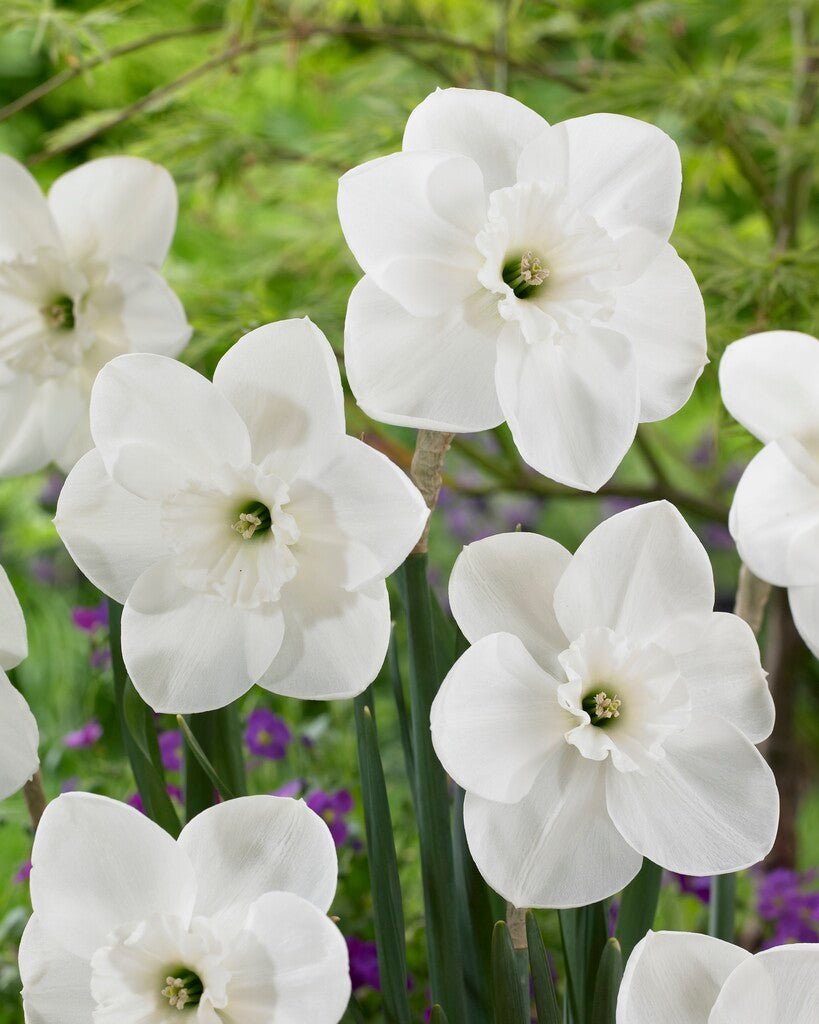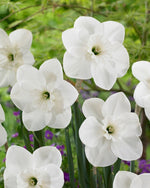
Falmouth Bay
$19.95
Unit price perAbout Falmouth Bay
Add bold, cheerful beauty to your spring garden with the large cupped daffodil Falmouth Bay. This stunning variety features creamy white petals with a large cup. Perfect for garden beds, borders, and cut flower arrangements, it blooms in early to mid-spring and brings a fresh burst of color after winter. A favorite among pollinators, this daffodil is easy to grow and naturalizes well year after year.
-
Bright white flowers with a large cup
-
Blooms in early to mid-spring for a vibrant seasonal display
-
Great for cutting and indoor arrangements
-
Deer and rabbit resistant
-
Comes back year after year with minimal care
How to plant and take care of large cupped daffodil Falmouth Bay:
-
Plant bulbs in fall, about 6 inches deep and 4–6 inches apart
-
Choose a sunny or lightly shaded location with well-drained soil
-
Water after planting and keep soil slightly moist during the growing season
-
Allow leaves to die back naturally to feed next year’s blooms
-
Avoid overwatering to prevent bulb rot
-
Apply bulb fertilizer in early spring for best results
FAQs

